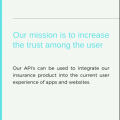4 Reasons Low-Code Insurance Is The Best Choice
When it comes to insurance, it is usually a highly regulated industry. They should be operating within the guidelines of the industry or be the subject to the penalties since there are companies, agencies as well as the vendors that usually concentrates on insurance. As a part of the lifecycle of the policy, over the years the insurers have implemented the software for the core policy administration. For governing the necessary functions, the claims management and billing software have automated several of the guidelines along with the low-code insurance.
![]()
There are even other rules that are there for licensing, financial reporting, as well as data privacy, are all outside of the spheres. The critical functions in these areas are still often a series of the manual processes that usually results in the limited transparency as well as the visibility for the internal staff and the external auditors that leaves the insurers a lot more vulnerable to both the financial as well as the reputational risk that is untenable within this industry as simple risk-averse as the insurance for most of the organizations that are out there.
For supporting the efforts to the standardize compliance activities as well as the automated process that increases the efficiency as well as the effectiveness of the compliance management programs when it comes to the property and casualty life as well as the reinsurance organizations that are there. For that framework usually, a low-code platform lays the optimal foundation. The IT compliance activities that are involved in the regulatory oversights of the corporate functions, it enables the cross-enterprise approach. The insurers are usually given the speed and the power to build the applications as well as the agility to bring about the changes with the help of the low-code.
How insurers benefit from low-code insurance?
Speed
You can easily build up compliance applications for optimizing the processes as well as meet the deadlines of the compliance with the low-code. For placing the regulatory and the compliance program on a rapid track, it works as a secret weapon.
Power
For uniting and digitizing the compliance activities that demands a collaborative approach, this is the most effective way. The insurers can optimize the process of the compliance that is there across the enterprises with the combination of the BPM, RPA, and AI through the low-code.
Agility
Change is completely inevitable when it comes to the regulations. For addressing the regulatory and the compliance needs with the execution of the ongoing business strategy is what this low-code platform helps you with. For bridging the collaboration gap and rapidly make the necessary changes required to remain under the compliance as the regulations evolve, is what is made possible through the speed and the flexibility that is there for the rapid development of the application.
Visibility
This low-code helps you get the insurance rates at a low cost providing a cutting edge to the same. This would be giving the visibility that is required by most of the insurers.




